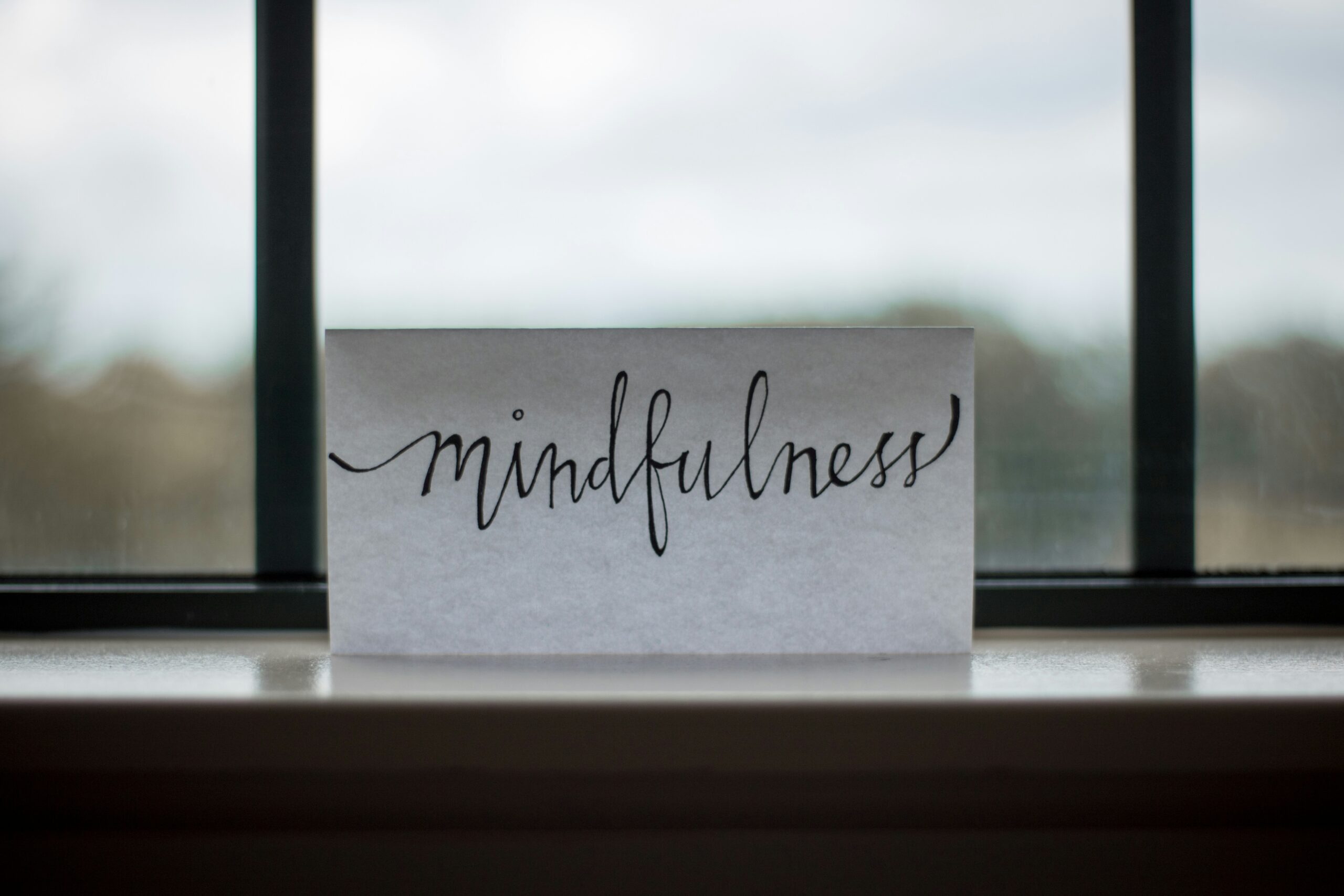
Introduction to Mindfulness
In today’s fast-paced society, where individuals are constantly bombarded with information and stress, the importance of mindfulness cannot be overstated. Mindfulness, a practice rooted in ancient traditions, has garnered significant attention in recent years due to its profound impact on mental health and well-being. An increasing body of scientific evidence supports the benefits of mindfulness techniques, emphasizing their effectiveness in stress reduction and overall mental health improvement.
As our understanding of mental health evolves, mindfulness has emerged as a powerful tool for achieving inner peace. The practice involves a conscious awareness and acceptance of the present moment, helping individuals develop a deeper connection with their thoughts and emotions. This heightened awareness can lead to significant improvements in mental clarity and emotional resilience.
The growing interest in mindfulness practices is indicative of their application across various aspects of life—from professional environments to personal development. These practices are not only accessible but also adaptable, making them suitable for diverse lifestyles and needs. The ability to cultivate mindfulness can transform the way individuals respond to stress, providing a buffer against the pressures of modern life.
Moreover, the mental health benefits of mindfulness cannot be ignored. Regular mindfulness practice has been linked to reduced symptoms of anxiety, depression, and other mental health conditions. It fosters a sense of calm and stability, enabling individuals to navigate life’s challenges with a balanced perspective. For a comprehensive definition of mindfulness and its core principles, refer to this credible source.
Ultimately, mindfulness is more than just a wellness trend; it is a sustainable approach to achieving inner peace and enhancing the quality of life. As we delve deeper into the techniques and benefits of mindfulness, it becomes evident that this ancient practice holds the key to navigating the complexities of contemporary existence with grace and composure.
Essential Mindfulness Techniques
Mindfulness, the practice of being present and fully engaged with whatever we’re doing at the moment, can profoundly impact our mental well-being. Integrating mindfulness techniques into daily life can help enhance inner peace and focus. Here are some essential mindfulness techniques, explained in a step-by-step manner, which can be easily practiced by beginners.
Mindful Breathing Exercises
Mindful breathing exercises are foundational for any mindfulness practice. Begin by finding a quiet place to sit comfortably. Close your eyes and take a deep breath in through your nose, allowing your abdomen to rise as your lungs fill with air. Exhale slowly through your mouth. Repeat this process, focusing solely on the sensation of the breath entering and leaving your body. This simple yet effective technique can be practiced at any time to center the mind and reduce stress.
Body Scan Meditation Guide
Body scan meditation is another powerful method for cultivating mindfulness. Start by lying down in a comfortable position. Close your eyes and bring your attention to your toes. Gradually, begin to bring awareness to each part of your body, moving up from your feet to your head. Notice any sensations, discomfort, or tension without trying to change anything. This process encourages a deeper connection between your mind and body, enhancing relaxation and self-awareness.
Loving-Kindness Meditation Steps
Loving-kindness meditation, or Metta, fosters feelings of compassion and love towards oneself and others. Sit in a comfortable position and close your eyes. Begin by directing kind and loving thoughts towards yourself, repeating phrases like “May I be happy” or “May I be healthy.” Gradually extend these wishes to others, starting with loved ones, then acquaintances, and even to those with whom you have conflicts. This meditation can help to build empathy and emotional resilience.
Yoga for Mindfulness
Mindful movement through practices such as yoga can effectively integrate mindfulness into physical exercise. Choose a quiet space and start with basic poses such as Mountain Pose (Tadasana) or Child’s Pose (Balasana). Focus on the alignment of your body and the rhythm of your breath with each movement. This practice not only promotes physical flexibility and strength but also anchors the mind in the present moment, enhancing overall mindfulness. For visual guidance, consider following video tutorials from reputable yoga instructors.
These techniques, when practiced consistently, can pave the way for a more mindful lifestyle. Harnessing the power of mindfulness can lead to greater inner peace, improved mental clarity, and an overall sense of well-being.
Integrating Mindfulness into Your Daily Routine
Integrating mindfulness into your daily routine can be a transformative practice that cultivates inner peace and clarity. Establishing a daily mindfulness routine involves practical strategies that can be seamlessly woven into the fabric of everyday life. Here, we explore several effective methods to help you begin this journey.
One of the most vital mindfulness practice tips is to set aside specific times for mindfulness. By allocating dedicated periods—whether it be early in the morning, during a lunch break, or before bedtime—you’re more likely to develop a consistent practice. Consistency is key, as regular practice creates deeper and more sustainable benefits.
Creating a mindfulness-friendly environment is essential for fostering practice. Choose a quiet, comfortable space where you can sit undisturbed. This environment doesn’t require elaborate arrangements; a simple, clean area with minimal distractions can significantly enhance your mindfulness sessions. Soft lighting or a favorite cushion can further create a conducive setting for inner reflection.
Starting small is another critical component of integrating mindfulness into your routine. Short, manageable sessions of 5 to 10 minutes can be quite effective, especially for beginners. Over time, as you grow more comfortable with the practice, you can gradually extend these periods. Remember, the goal isn’t duration but the quality of engagement.
The long-term benefits of mindfulness are well-documented. With regular practice, individuals often experience reduced stress, improved emotional regulation, and enhanced overall well-being. To fully reap these benefits, commitment to maintaining a daily routine is paramount.
For additional guidance on building and sustaining effective habits, you may find this resource on building daily habits and routines particularly useful.
The Long-Term Benefits of Mindfulness for Inner Peace
Mindfulness is not just a fleeting trend but a practice with substantial long-term benefits. Consistent engagement in mindfulness exercises fosters a state of sustained inner peace that can be profoundly transformative. Among these benefits is improved emotional regulation, as mindfulness equips individuals with the tools to observe and understand their emotions without immediate reaction. This awareness fosters a sense of calm and reduces emotional volatility.
Another significant advantage is the enhanced focus that mindfulness can cultivate. Through regular practice, the mind becomes better trained at remaining present and attentive. This sharpened focus not only contributes to greater productivity but also enriches one’s appreciation of day-to-day experiences, leading to a more fulfilling life.
Furthermore, mindfulness practice is a powerful tool in building resilience to stress. By fostering a mindset grounded in the present moment, individuals can manage stress more effectively. This reduced stress response, in turn, promotes overall well-being and mental health. Empirical research supports these claims, underscoring the long-term mindfulness benefits through various scientific studies. For example, a study published in the Journal of Psychosomatic Research highlights how mindfulness can significantly lower stress levels and improve one’s psychological state.
Personal testimonials add a relatable dimension to understanding these benefits. For instance, many individuals practicing mindfulness have reported experiencing a profound shift in their ability to manage daily stressors. One practitioner shared, “Since incorporating mindfulness into my routine, I feel more balanced and less reactive to stressful situations, which has had a positive impact on both my personal and professional life.”
Collectively, the long-term benefits of mindfulness extend far beyond transient moments of calm, contributing to a well-rounded and resilient approach to life. By prioritizing mindfulness, one can achieve lasting inner peace, improved focus, and enhanced emotional stability, fostering a more serene and balanced existence.












